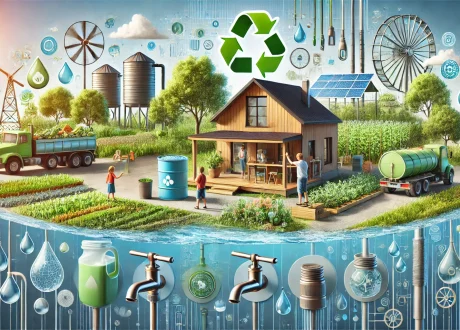
Water Conservation: 7 Simple Ways to Save Water at Home and in Your Business
Water is one of our most precious resources, yet it is often wasted without thought. ...

Temperature in the Kyrgyz Republic rose twice the global average over climate change. Natural disasters in the country caused annual average economic losses of $27 million between 2012-2018.
In 2022, natural disasters resulted in nearly 150 people losing their lives, according to a new Atlas of Environmental Change launched by the United Nations Environment Program (UNEP).
Climate change is furthermore increasing the frequency and intensity of natural disasters. On average, 200 emergencies are registered in the country each year, 90% of which are of a natural origin, such as flooding, earthquakes, mudslides, rockfalls and avalanches.
The average annual temperature in the country has increased by 1.2°C between 1960 and 2023— compared to a global average of 0.6°C. This rise is expected to speed up in the coming decades. Warmer temperatures mean that river flows are projected to decrease while demand for water increases.
The Atlas data underlines the urgent need for strong climate adaptation policies to reduce irrigation losses, strengthen early warning systems, as well as to improve pasture management —70% of pastures in the country are estimated to be degraded.
“The Kyrgyz Republic is at the frontline of climate change impacts,” said UNEP’s Europe Office Director, Arnold Kreilhuber. “The wealth of data in this Atlas can form a solid evidence base to support the country in adapting to environmental change and manage the environment sustainably for current and future generations.”
Water resources are one of the most important and at the same time the most vulnerable components of the natural environment, which are changing very quickly under the influence of human activities and climate change.
Up to 93% of the Kyrgyz Republic’s electricity is generated by hydropower plants. Climate change, which can lead to a decrease in rainfall, shifting snow covers, and glacial retreat, makes it likely that all reservoirs in the country will receive less water over the next thirty years. For example, water inflow to the Toktogul reservoir, a key source of hydropower, is projected to drop by up to 18.8% by 2050 — meaning less water to turn turbines and generate electricity.
The Kyrgyz Republic is located at the upper reaches of many major rivers, making transboundary cooperation and integrated water management important for the entire region.
Even as it faces these challenges, the country has made significant strides in environmental conservation, particularly in protecting its forests and wildlife. Since 2000, forest cover has increased from 6.2% to 6.9% of the Kyrgyz Republic due to afforestation, a difficult task in a country that is overwhelmingly mountainous. In 2000, protected areas made up only 0.5 million hectares of the country, but this increased to 1.5 million hectares by 2023. By 2040, protected areas are planned to cover as much as 10% of the country and protect 60–65% of the species included in the Red List of the International Union for Conservation of Nature.
All forests in the country are legally protected from large-scale commercial logging and — thanks to the establishment of the Khan Teniri Nature Park — the area of protected land that is home to snow leopards in the Central Tien Shan mountains has been expanded by 40%.
اترك تعليقا